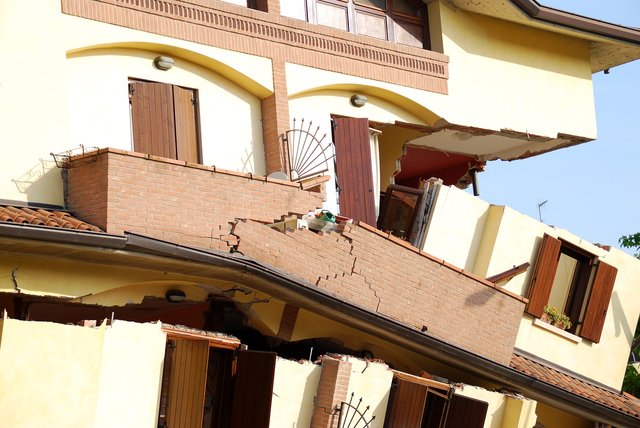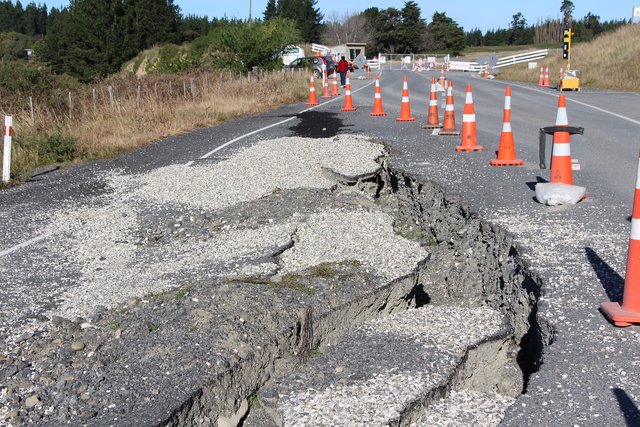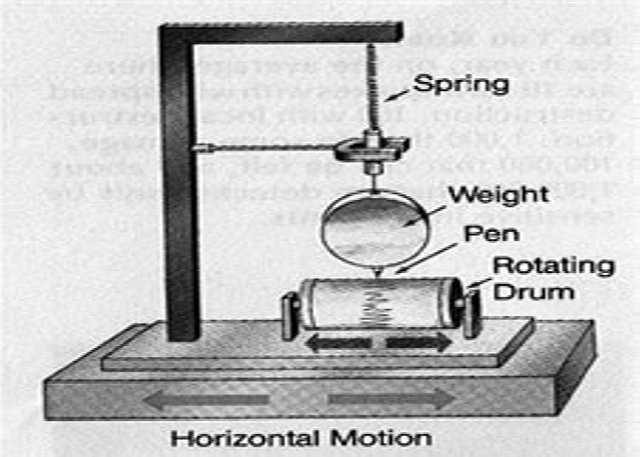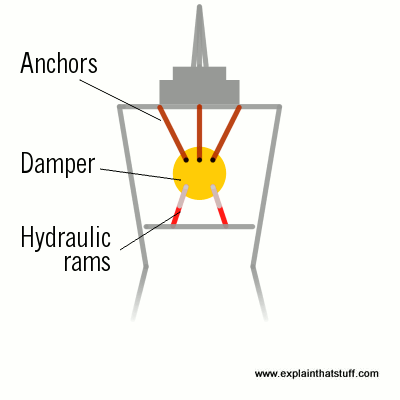Earthquake, Man's Nightmare That Cannot Be Curbed: What Is It And How Can We Best Live With It? (Part 2)
Part 1 of this short series detailed the meaning of earthquake and the chains of geological interactions between tectonic plates that could eventually result into an earthquake. We particularly used good graphics to show the four major layers that our planet earth is made up of, indicating the region where the gliding and sliding movements between different tectonic plates could result into an earthquake.

[Source: Pixabay. CC0 licensed]
No region of the world as we have it today is immune to earthquake, though some regions (sitting on tectonic faults) are more predisposed to experiencing earthquakes than others. California, for example, is long overdue for a major earthquake owing to the fact that she is directly located above a major tectonic boundary called the San Andreas faultref. Earthquakes that occur in volcanic regions are usually triggered by both tectonic faults and magma movement in volcanoesref.
Having said that; in this Part 2, we will be looking at the reason the ground (earth) shakes whenever a major earthquake strikes, the methods that are used to measure earthquakes and how to read the scales as well as actions we can take to reduce the degree of calamities following earthquakes since, of course, we cannot prevent earthquakes from occurring. It will be an honor to have you read this piece, and offer your opinions in the comment section.
Why ground (earth) shakes in the event of an earthquake
When two tectonic boundaries jammed together and locked, the rest of the tectonic plates would continue to move. This would make the energy the two plates would have utilized in sliding past one another to be stored up in the volume around the fault surface as strain energy. This continues until the force of the stress buildup occasioned by the relative movements of the free ends of the tectonic plates overcomes the frictional force holding the locked edges, forcing it to unlock and thus allowing the sliding over of the locked portion of the fault.

[Source: Pixabay. CC0 licensed]
As this happens, the stain energy that have been building up for a long time, is released, radiating outwards to all directions from the fault line, and then travels through the ground as seismic waves like those observed in the pool of water when a stone is suddenly dropped into it. And once they get to Earth's surface, they shake up everything including houses, cars, humans, just anything standing on earth. This explains why the ground (earth) shakes whenever a major earthquake strikes. Seismic waves are said to travel through the ground in two different ways at incredible speeds of around 25,000 km/h (15,500 mph), which is why one cannot escape earthquakes because before one could think of an escape route, one is already caught in the melee. Click here for more information on the two ways seismic waves travel through the ground. In the mean time, let us quickly look at how earthquakes are recorded and measured.
Recording and measuring the size of earthquakes
Seismologists are the scientists who study earthquakes by recording earth tremors (i.e the shaking) using an instruments known as seismometers. Using seismometers, earth tremors are recorded as charts drawn on piece of papers known as seismographs. A seismometer is made of a base with which it is firmly held to the ground and a weighted pen on a spring that's suspended over a piece of paper, which is being turned slowly underneath the suspended weighted pen at a constant speed by an electric motor.

[Image released to Public Domain by the US Department of interior. Copyright info here]
In the event of an earthquake, ground is caused to shake sideways, causing the base of the seismometer to shake as well while the hanging weighted pen remained static as the spring it is being suspected from absorbs the movement. Because, the electric motor is at constant speed, different phases of the piece of paper is gradually exposed to the pen which records the difference between the rigid part of the seismometer and the moving part by wiggling chart lines on the paper.
The size of the earthquake is then determined on the basis of the patterns of the wiggly lines. If the wiggly line is short and not much, that means the earthquake is a minor one. If, however, the wiggly line is long and are much, it is an indication of a serious earthquake. The length of the wiggle indicates the size of the fault while the size of the wiggle indicates the extent of slip. The size of an earthquake is more appropriately called its magnitude, which can be calculated by various methods of which the best known are the Richter scale and the Movement Magnetic Scale (MMS). There is also a less known method called Mercalli Intensity Scale (MIS) which does not actually measure magnitude of the earthquake but the extent of damages and devastations following an earthquake. You can go here for complete details of each of these methods.
Designing our buildings to better absorb the seismic energy
As we have noted severally in this series. We cannot prevent earthquake from striking, neither can we prevent its seismic waves from moving through the earth and causing damage. What then can we do to protect buildings located at places with high chances of experiencing earthquakes? Although there is no sure way that guarantees 100% protection for these buildings, but there are ways that promise to reduce severity of damage caused to these buildings and possibly prevent them from collapsing.
One of such ways is to design the buildings in such a way that they can absorb seismic energy and quickly dissipate it before it would have chance to cause damage. A good example of this involves using what's known as base oscillators to separate the building from its foundation. In base oscillator's aided buildings, the upper parts of the buildings are stood on many sturdy rubber feet enabling them to move about more easily and freely. A real life example where this is put into practice is in construction of the University of Southern California University Hospital in Los Angeles which is an eight-story edifice supported by about 149 isolatorsref. These isolators were said to have been the reason the house did not collapse when it was hit by a 6.7 magnitude earthquake in 1994.

[Gif by explainthatstuff.com published under CC BY-NC-SA 3.0 license. Author: Chris Woodford]
In another scenario, the buildings are mounted on gigantic hydraulic devices known as dampers which operate like shock absorbers to soak up and neutralize the ground shaking movements, preventing them from being transmitted to the upper floors.
Possibly the world's most famous building shock absorber is a giant, 660-tonne ball inside the Taipei 101 skyscraper in Taiwan. If an earthquake (or high wind) makes the tower sway in one direction, the ball (mounted on hydraulic rams) moves the other way, effectively canceling out the movement. || Source
Safety measures for the people
Taking steps that would safeguard people in the event of a quake doesn't have to be elaborate or costly as against what most people think. Where a family does not have the means to install a huge mass damper in the home, there are certain simple tips that have been proven to be just as effective which such families can learn and put to good use to prevent avoidable damages. Such families can have at least a member of the family trained in basic first aid techniques, and have a first aid kit in place in case of emergency.
Tall structures like book shelves should be fastened and tied to strong objects so that they do not fall on people. Fragile glasses should be swapped with stronger ones (like bulletproof glasses) to avoid being inflicted with multiple glass cuts. Every member of the family should be trained on how to turn of gas cylinders and central electrical fuse. Things like these could make all the difference. Thanks.
References
- Earthquake
- Why do earthquakes happen
- Earth's quakes
- The Science of earthquakes
- Earthquake
Truly yours,
@sciencetech
STEM contributor
@sciencetech, the part one and two of ur earthquake articles, I enjoyed reading them because it's more enlighten.
Let's talk about those living in the region sitting on tectonic faults and has no place to go, what options do they have?
They should follow the safety measures. Simple. Thanks
Hi @sciencetech, You are very knowledgeable at what you do. I must confess that I've really grabbed a lot of ideas from your posts on Earthquake... Keep up the good work!
Thanks my friend. Appreciate this comment.
@sciencetech
STEM contributor
This post has been voted on by the steemstem curation team and voting trail.
There is more to SteemSTEM than just writing posts, check here for some more tips on being a community member. You can also join our discord here to get to know the rest of the community!